/https://storage.googleapis.com/s3-autonomous-upgrade-3/static/upload/images/new_post/10-features-in-ergonomic-lumbar-support-chair-1320-1615540023624.jpg)
10 Features to Look for in Ergonomic Lumbar Support Chair
Nowadays, your average business worker or anyone with a desk job spends a ton of time sitting in an office chair while working. If you consider the average working hours of desk-bound workers and the number of years people work on average, it becomes clear that we spend a significant part of our lives at a desk. For that reason, if you are an office worker or have a desk job, you might be interested in investing in an ergonomic lumbar support chair. Picking a chair can be challenging at first, but knowing which features you should look for in it can make it easier for you.
Avoid making the mistake of improving or getting other office furniture in your workplace before purchasing an ergonomic chair with lumbar support. There are many benefits you can get from it. You can solve the desk jockey’s most common incident, back injury, and other issues just by buying an adjustable lumbar support office chair.
What Is an Ergonomic Lumbar Support Chair?
Usually, the term ergonomics refers to the process of arranging or designing a workplace, products, or systems in a way that they properly fit whomever uses them. It doesn’t limit itself to office workplaces, as it covers a wide range of working environments. This science branch looks to improve these workspaces, environments, and products while considering the human’s abilities and limitations.
An ergonomic lumbar support chair looks to solve any neck and back pain and stress that stem from sitting for extended periods. It has a design that supports your body correctly while working at your desk. Thanks to its lumbar support features, it provides proper back support and distributes your weight adequately. An ergonomic chair with lower back support is also comfortable and offers a fair degree of mobility while fitting any user due to their adjustable parts.

Why Should an Ergonomic Chair Have a Lumbar Support Feature?
It’s probably the most important part of an ergonomic chair. When a chair doesn’t have this feature, sitting for long periods can be quite harmful to your health. Chairs that don’t have proper lower back support can let you slump over time, straining your lower spine and increasing your risk of injury. It’s even better if the chair’s lower back support is adjustable, as it allows it to adapt to any user’s lower back.

Why Is It Important to Get an Ergonomic Lumbar Support Chair?
The main reason you should get an ergonomic chair with lower back support is the benefits it provides to your health. Although they can be more expensive than your typical office chair, you should see them as an investment for yourself or your employees. Having a static posture while sitting at your desk can put you at risk of developing some disorders or suffering injuries.
Musculoskeletal disorders are some of them, and they can affect your muscles, tendons, ligaments, joints, and nerves. Using regular office chairs can reinforce incorrect sitting postures, putting stress and pressure on your backbone and ultimately causing back pain and other problems. It can also cause circulation problems, which in turn can lead to more severe issues.
An ergonomic chair with lower back support adapts to your body shape, helping you keep a good working posture. It maintains your joints in a neutral position and keeps your hips and pelvis properly aligned. Overall, it reduces the risk of suffering from injury and strain while letting you retain more energy and focus more on the job.
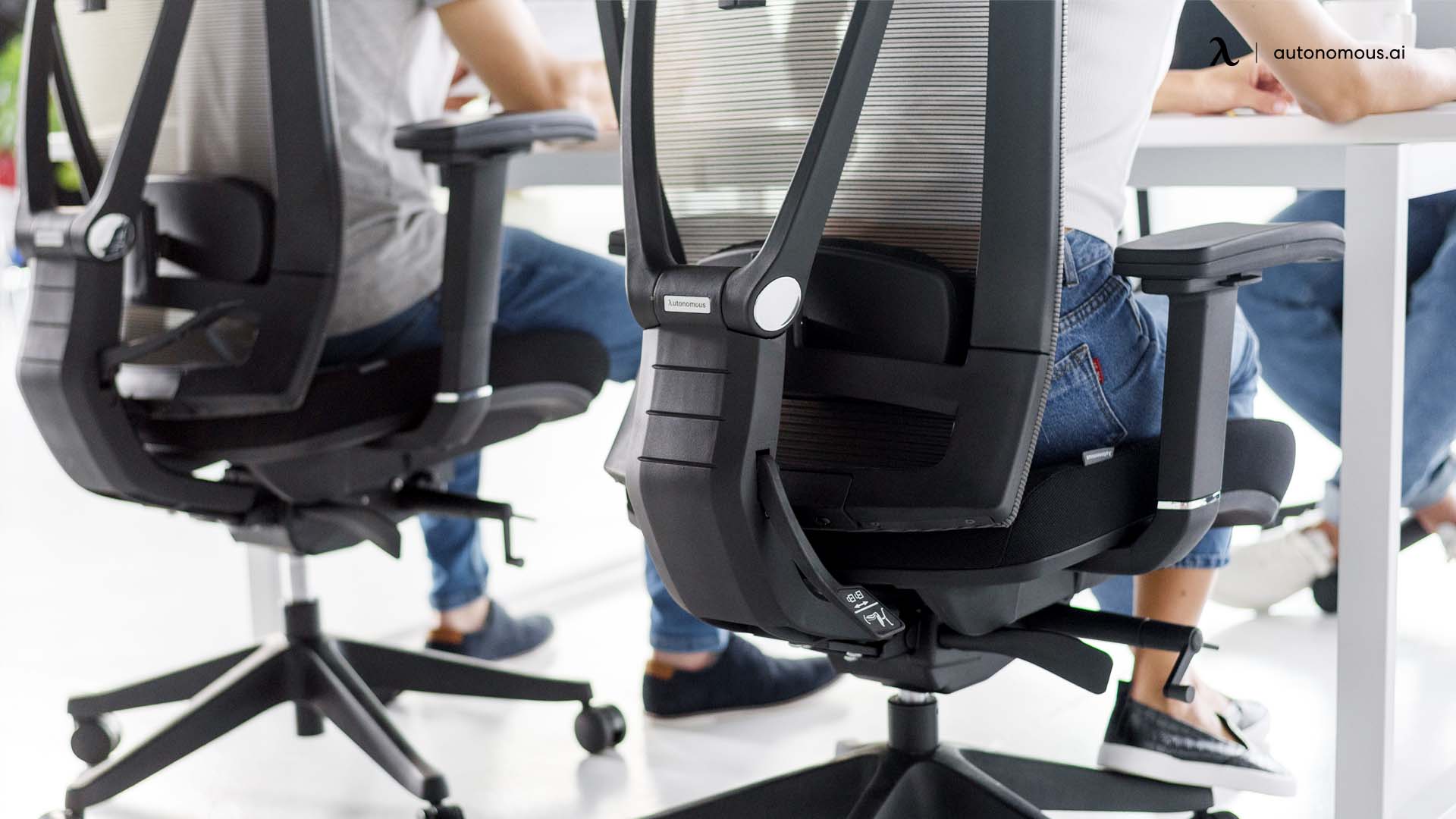
There are many studies on the subject, and the point they all agree on is that ergonomic chairs can increase the productivity and efficiency of the people sitting in them. If you spend most of your time working at your home office or you’re an employer contemplating the choice, don’t think much further and get an ergonomic lumbar support chair.
Almost every desk worker prioritizes an office that values and improves their wellbeing. Whether you’re an employee or an employer, investing in an ergonomic chair with lower back support pays off as time passes. They also tend to last for many years and can withstand a great deal of wear and tear.
Which Features You Need to Look for in an Ergonomic Lumbar Support Chair?
Many chair manufacturers on the market describe their chairs as ergonomic, but many of them miss some vital features that most ergonomic chairs should have. If you’re investing in an ergonomic office chair, it’s essential to know which characteristics they can or should have.
The better an ergonomic chair is, the more adjustable parts they tend to have. As everybody’s physique is different, getting a chair that can adjust to anybody is crucial. It should also let you keep a dynamic sitting posture if you want to improve your health further.

The best ergonomic chairs can adjust nearly every piece they have, while lower-priced ones sacrifice some of these features to make them more accessible. An ergonomic chair with lower back support that implements essential characteristics and omits other not-so-important ones can still be an excellent choice. Here are some features that ergonomic lumbar support chairs can have while considering their adjustability:
1. Backrest
An ergonomic chair’s back support must support the spine’s natural curvature while paying attention to your lumbar region, and its width should be between 12 to 19 inches. The backrest plays an integral part in the previously mentioned dynamic sitting. A good backrest promotes it, increasing your blood flow and relieving you from some of the stress that comes from sitting.
Some ergonomic chair’s backrest and seat come separate, while others come together as one piece. When the backrest is separate from the seat, you should be able to adjust its height and angle. On the other hand, the chair’s backrest should have adjustable reclining angles with a tilt-locking mechanism if it comes as one piece.
The reclining back angle is the essential part of the dynamic sitting, and it should allow anyone to recline between 110 and 130 degrees at least. Leaning back into the chair and stretching is an excellent way to relieve stress, helping you maintain an efficient workflow.

2. Lumbar Support
Although every ergonomic lumbar support chair comes with it, you might not know that there are various lumbar support types. An ergonomic chair with lower back support can have a fixed lumbar support position, while another may allow some manual adjustment. Some high-end chairs feature dynamic lumbar support that automatically adjusts its depth and firmness considering your posture.
There is also a portable lumbar back support in the form of lumbar rolls or cushions. It’s an inexpensive alternative to standard lumbar support, and many gaming chairs usually make use of it. Although if you reach this point, rolling a towel to an appropriate thickness isn’t a bad idea.
Regardless of the type, having some sort of lumbar support is essential for any ergonomic chair, as it can adequately support your lower body while stabilizing your neck and head. An ergonomic chair with lower back support can also protect your spine, regulate your leg’s movements, reduce your risk of injury, and distribute your weight better.
The best choice regarding lower back support in an ergonomic chair would be looking for a chair with adjustable lumbar support or dynamic lumbar support.
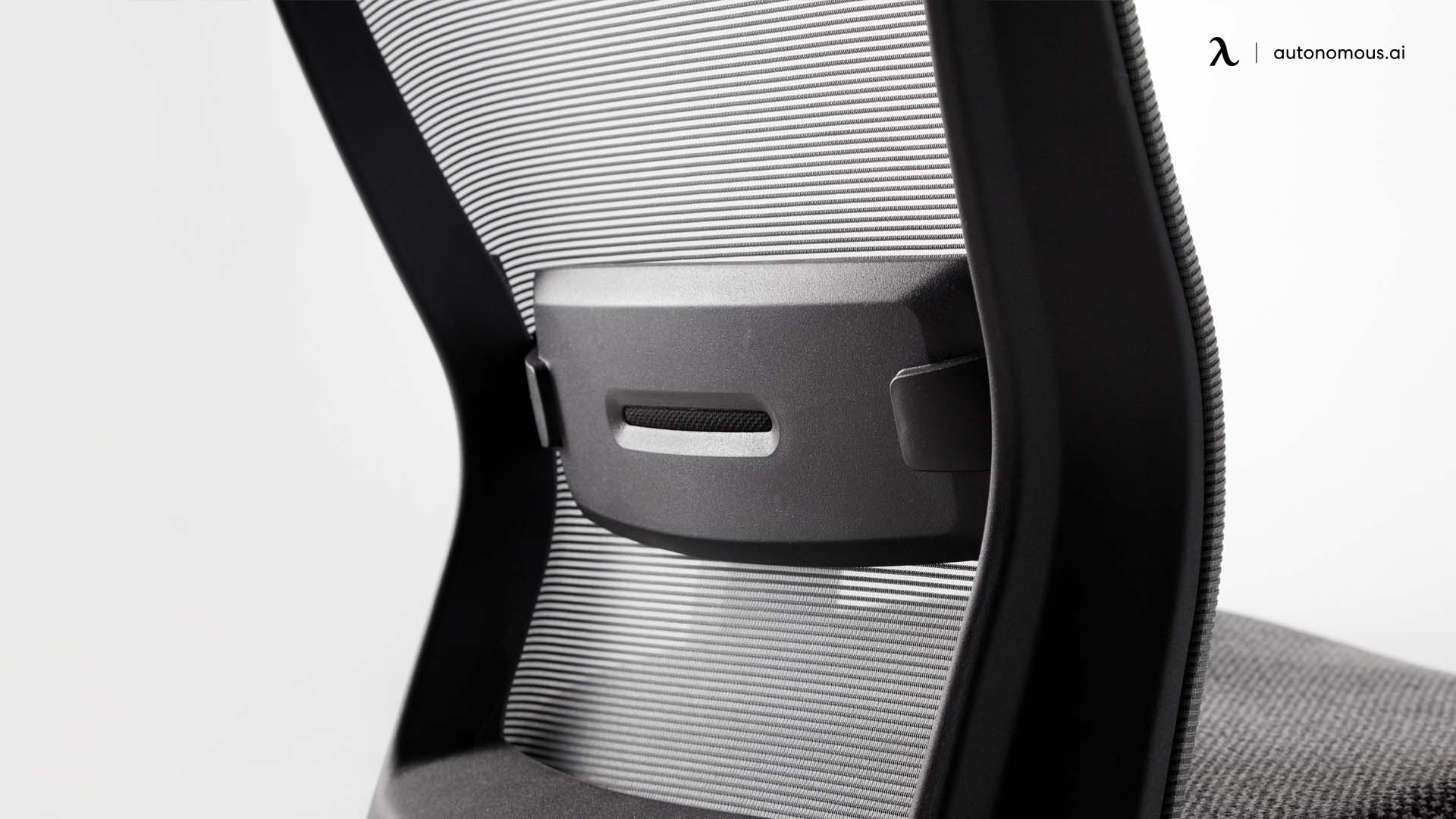
3. Seat Height
An adjustable seat height is a feature that every adjustable lumbar support office chair has. Good chairs usually allow for a height adjustment range around 16 and 21 inches from the floor. This range works for most people, allowing whoever uses it to lay their feet flat on the ground and keep their knees at a 90-degree angle or slightly above the hips.
People who are five feet tall or shorter should look for a chair with a seat height of 15 inches from the ground. People standing over 6.2 feet or taller, on the other hand, should look for a chair that’s in the upper range, around 21 inches or more in seat height.
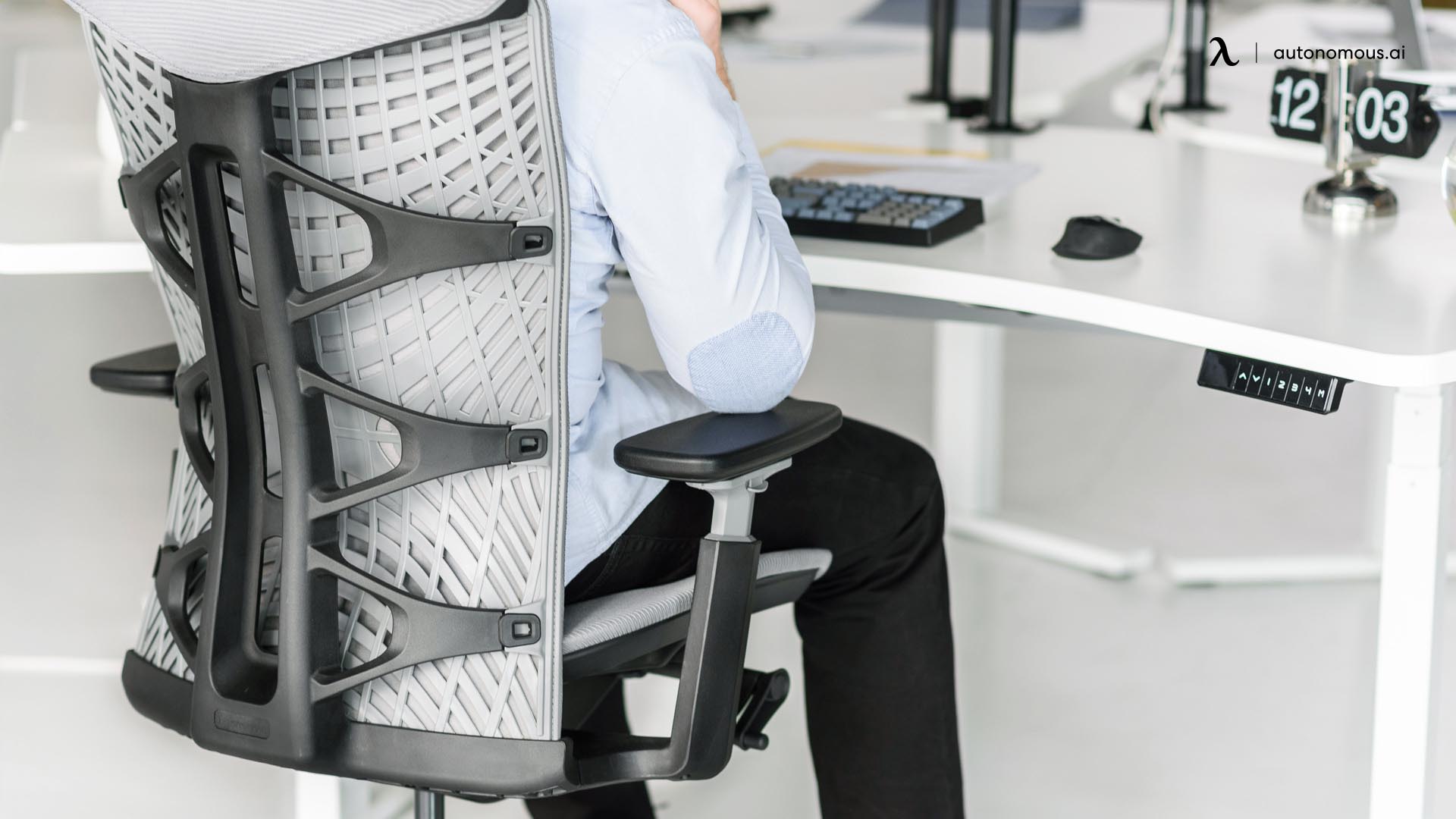
4. Seat Width and Depth
A proper ergonomic lumbar support chair should have a seat width and depth that can accommodate most users comfortably. The seat width standard is around 17 to 20 inches, while the seat’s depth should be deep enough to leave a space between the chair seat and your knees. This space must be between two and four inches from your knee’s back to the chair’s edge when you’re laying your back against the backrest.
It would be best to look for an ergonomic chair with lower back support with an adjustable seat depth. This feature is usually a slider that allows you to move the seat forward or backward.
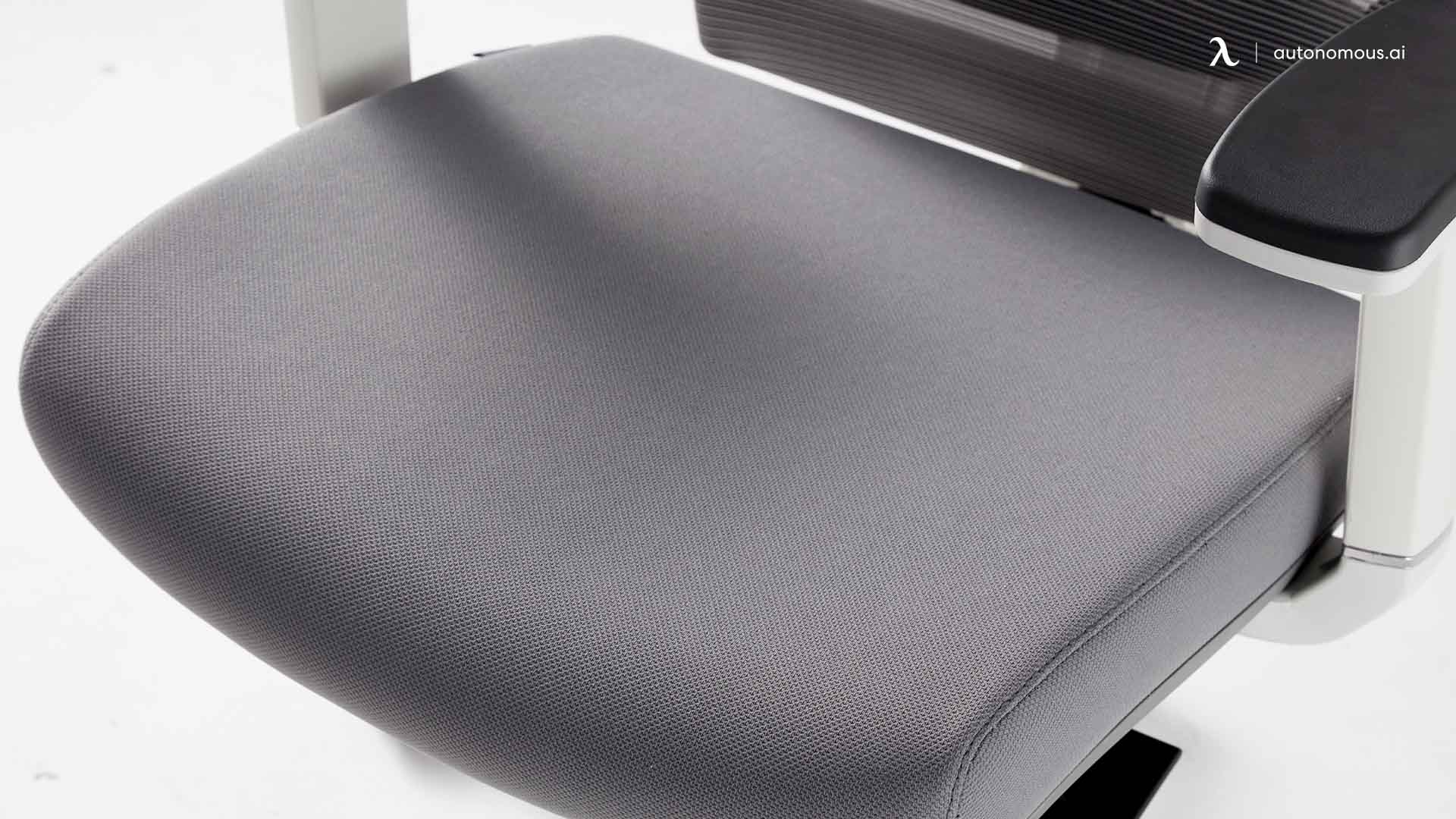
5. Seat Tilt
Usually known as a forward tilt mechanism, it’s a feature that lets you change the seat’s angle. This mechanism allows you to tilt the seat’s front up or down to slightly improve your posture. It does so by promoting your pelvis’s neutral position, distributing your weight evenly, and removing some pressure off your legs.
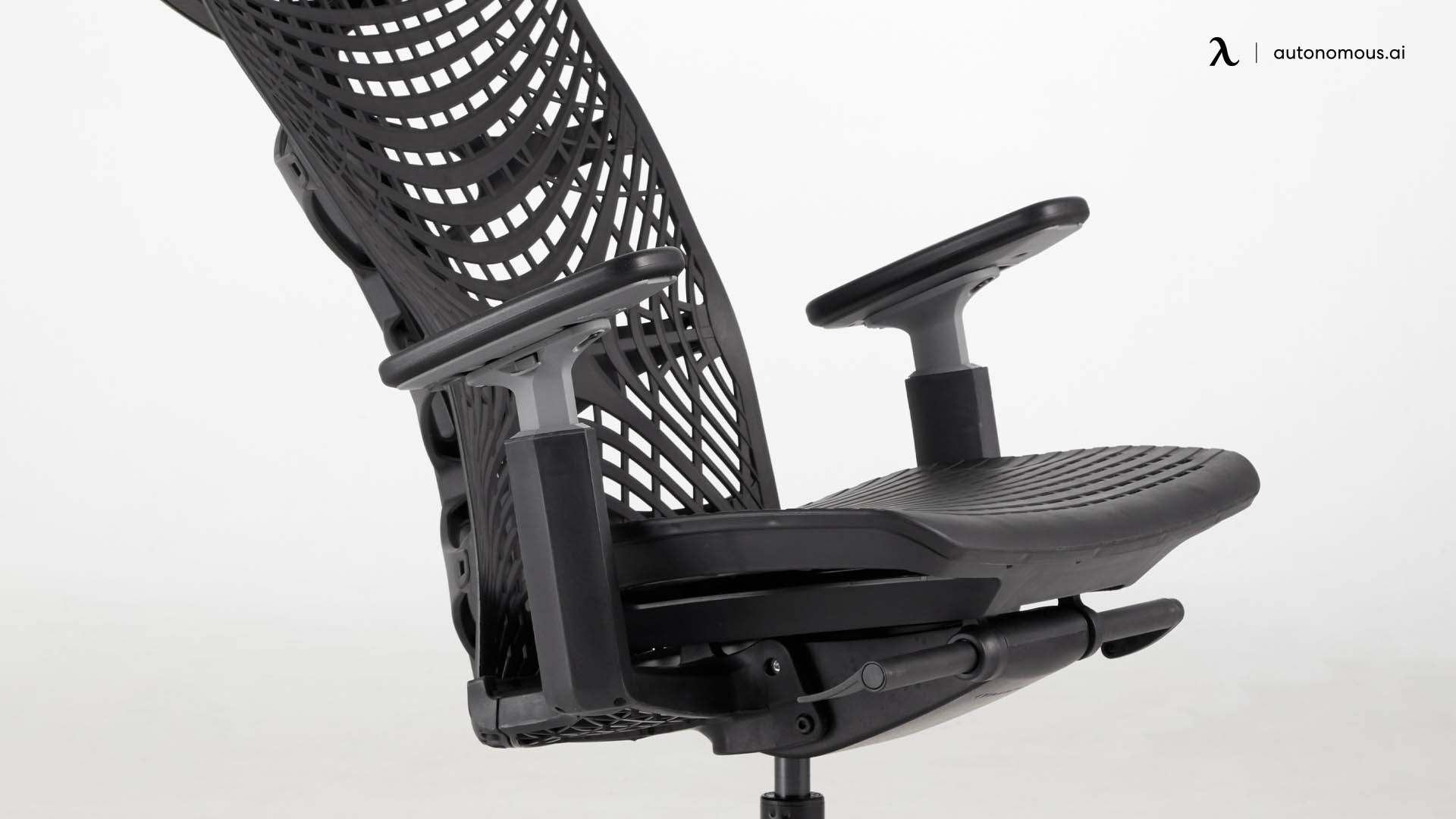
6. Seat and Backrest Cushioning
It’s essential to look for a chair that uses materials that can be comfortable for prolonged sitting periods. The material of the ergonomic chair’s seat and backrest should have sufficient padding to provide a snug experience throughout your workday.
Ensuring the padding uses sufficient high-quality foam is important. A low amount of padding is uncomfortable, and poor quality foam can start to sag quickly. Some cushioning materials can be comfy yet unbreathable, making them awkward and hot to use after a while.
One of the most comfortable and fresh options to pick is a mesh ergonomic chair with lumbar support. A mesh backrest can keep you cool as it allows for plenty of ventilation while contouring your body and spreading your weight evenly.
7. Armrests
The armrests of an ergonomic chair with lower back support should be adjustable or removable. Their adjustability significantly varies depending on the chair. Some only allow you to change the armrest’s height, while others let you change their height, width, tilt, and rotation. Regardless, any degree of adjustability should suffice as long as it enables you to rest your shoulders and arms comfortably in a relaxed position while working.

8. Headrest
A headrest is a simple feature that many ergonomic chairs with lower back support omit, as it isn’t strictly necessary. However, a suitable headrest can make a significant difference. When you’re working on your desk typing or writing documents, having somewhere to lay your head on for a bit can take off some of the pressure on your neck and shoulders.
It’s a comfortable feature that lets you regain focus and keep going at your job, and it encourages a proper sitting posture every time you lean your head on it.
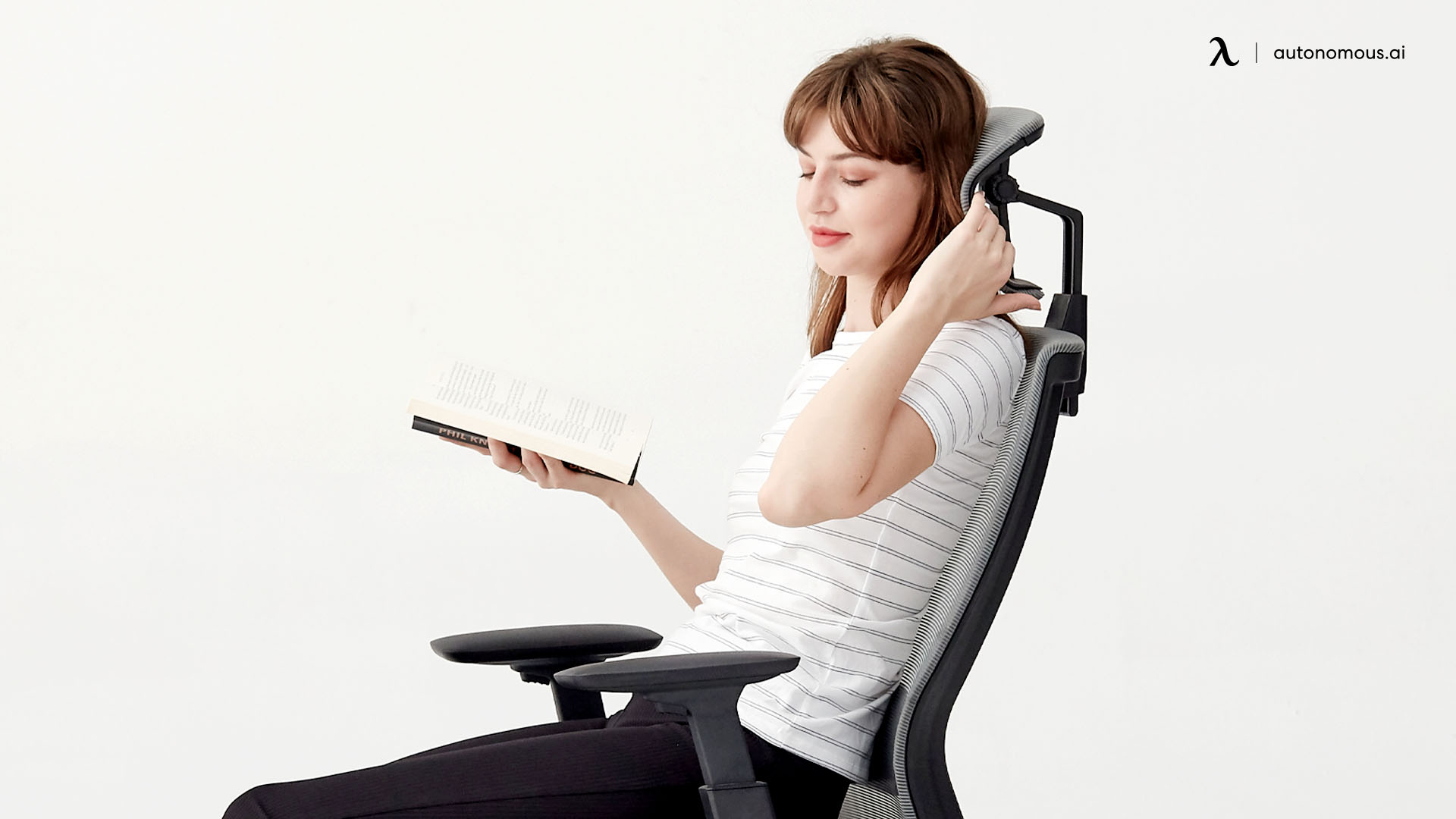
9. Mobility
Every chair, regular or ergonomic, should be able to rotate and allow you to reach multiple areas of your workspace without unduly straining yourself. Having an adjustable lumbar support office chair with a stable base is essential, so you should look for one with a five-star sturdy steel base.
The caster wheels mostly depend on the surface of your office. Most chairs use hard casters for carpeted floors, but soft casters are vital for hard surfaces, such as hardwood and laminate. You can also purchase an office floor mat if you want to forget about this issue altogether.
10. Make and Warranty
As most chairs go through plenty of use, it’s appropriate to ensure it comes with a good warranty and making sure it’s well made. Checking if the company has a good reputation and whether the ergonomic chair with lower back support is certified can provide insight into its quality. Another thing you can do is look for the chair’s reviews to confirm the chair’s value.

The Bottom Line
Using an excellent ergonomic lumbar support chair can promote a healthy working environment while improving your productivity and focus. You shouldn’t settle for a chair that doesn’t provide enough comfort during long workdays.
Knowing the features these chairs offer can help you make an investment that best suits your needs or your employee’s needs. Good ergonomic chairs have most of these features, such as the Kinn Chair or the ErgoChair 2, but keep in mind that these chairs don’t automatically fix your posture. They encourage you to maintain a good posture, but you still need to dedicate at least some time to work on it on your own.
Subscribe for a 10% discount on your first order.
Sign up for our weekly update and be the first to know about our specials & promotions.
Verbreiten Sie es weiter

/https://storage.googleapis.com/s3-autonomous-upgrade-3/production/ecm/240417/april-10-off-offer-2024-1920x540-CTA.jpg)
/https://storage.googleapis.com/s3-autonomous-upgrade-3/production/ecm/240417/april-10-off-offer-2024-720x1200-CTA.jpg)
/https://storage.googleapis.com/s3-autonomous-upgrade-3/production/ecm/240415/bulk-order-apr-2024-offer-720x1200-CTA-min.jpg)

/https://storage.googleapis.com/s3-autonomous-upgrade-3/static/upload/images/new_post_author/admin-1.png)